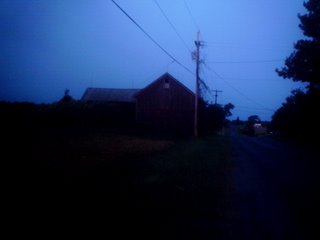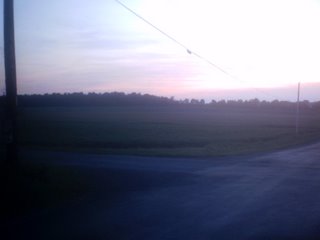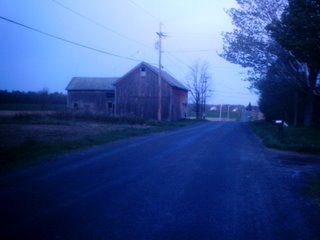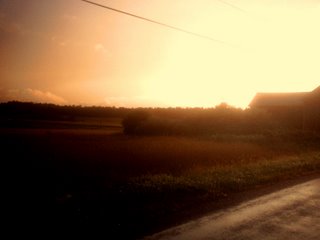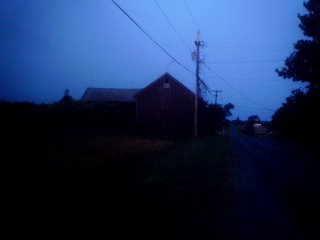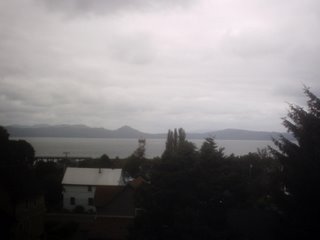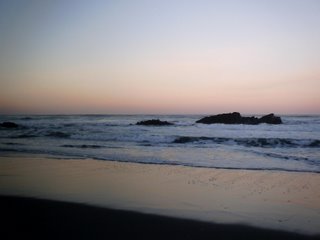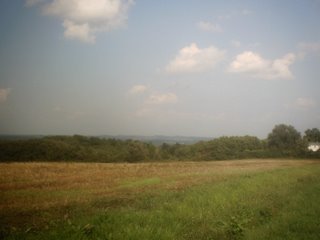At dawn the world begins,
the things hidden in the night
return again.
 ..
..The barn on the corner
emerges by degreesfrom the darkness.
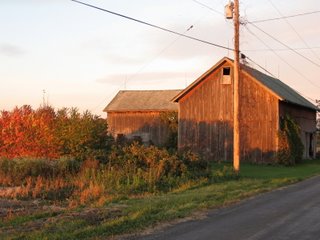
The colors
are hidden in the sun
and daylight paints the barn with
different nuances every day.
It is put together by means of timber frame construction, a technique that has been dated to ancient Egypt and achieving it's final technical form in the 14th century. The timber frame construction is so durable that buildings made with this technique a thousand years ago are still in use today.
Its frame is made of rough cut logs, hand chiseled to the necessary size with mortise and tenon joints fastened with wooden pins hammered through the ends to hold the structure solidly together.
For a period of time in the 19th century and into the 20th century the construction style was abandoned in favor of 2 x 4's and nails, along with concrete and sheet metal for siding. But a renewed interest in the timber frame construction resumed in the 1960's for housing construction owing to it's ability to provide large spacious living areas.
This barn has been on the hilltop at the intersection of Silver st. and Townline rd. for at least 80 years, and is a stable reassuring presence reflecting an era that has passed. It has been almost as much a part of the landscape as the hills and the horizons.
Each morning it reappears. Each night it slips into the darkness. This is its dance.
Text and photographs copyright 2006 by David H. Roche




















